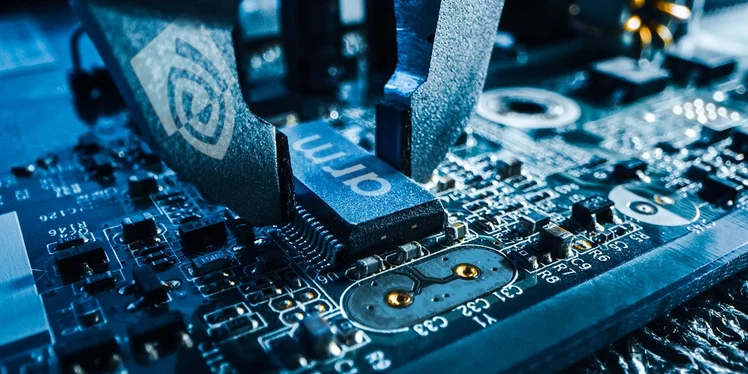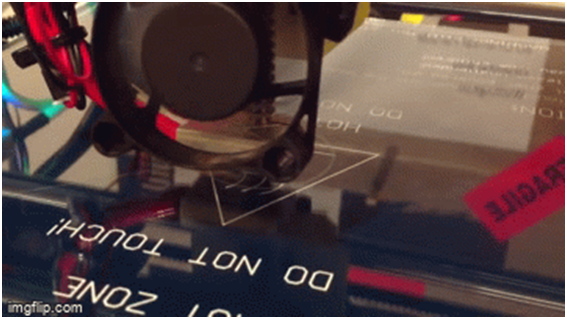
Charles R. Goulding and Adam Friedman consider 3D printing implications of a recent acquisition.
Graphics chip pioneer NVIDIA Corporation is steadily increasing its presence in the 3D printing industry, and its recent acquisition of Arm Holdings in September 2020 will make NVIDIA a foremost market player.
NVIDIA chips, which are omnipresent in the computing industry, are being used to create better computing power for higher-scale renderings and simulations of 3D prints. Recently, NVIDIA’s Quadro graphic processing units (GPUs) were utilized in creating an open-source 3D printing prototype software written in Python programming language.
Cambridge-based Arm Holdings is a corporate leader in intellectual property for computer chips, especially for reduced instruction set computer (RISC) chips that are used in 3D printers. Arm effectively licenses RISC architecture to different microprocessors production companies and those companies in turn manufacture chips with Arm architecture.
As countless technology products have come out to the market utilizing ARM architecture in their microprocessors, it is consistent and inevitable that the new wave of 3D printing technology will adapt Arm architecture. Arm’s technology has become a nest egg for incubating newer 3D printer technologies that will utilize Arm-based microprocessors and can evolve with current Arm technology.
With a merger between NVIDIA and Arm, the economies of scale and the combination of both businesses will be a synergy for being a market leader in computer chips producing a more powerful 3D printing product.
Current AVR/3D Printing Chips

The most widely-used chips in today’s 3D printers are the 8-bit Alf and Vegard (AVR) RISC line of computer chips. The AVR chips are well versed in printing the different line segments and properties of structures that are created on 3D printers. However, 3D printers running at maximum capacity on an 8-bit AVR chip are prone to stuttering. The 8-bit AVR was designed with minimized coding and uses shortcuts and hacks for the 3D printer to maintain its current speeds of printing. For the 8-bit AVR, the graphics display speed is limited by its standard methods for performing floating-point arithmetic. The 8-bit AVR can only print complex geometries at constant velocities.
Current Arm RISC Chip Technology
Arm chips provide a solution to the 8-bit AVR stuttering as the chip was designed with greater mathematical abilities, namely optimizing the chip’s floating-point arithmetic (which is mathematics through the usage of significant figures). Floating-point arithmetic is important for optimizing the processing and compiling speed of chips. The speed of an accompanying computer is crucial when the computer is being processed in assembly and fundamental binary languages that generate computer transactions.
Arm chips support hard floats, which is hardware that does floating-point operations with greater speed and optimum efficiency. Arm chips benefit from floating-point arithmetic and cascades to better overall features with Arm chips for 3D printing. Furthermore, unlike that of the 8-bit AVR chip, Arm chips are multicore and multithreaded. This allows for the Arm chip on a 3D printer to print a design off of the motor controller while using a digital display menu, for example, which ultimately enables complex geometries and curved layered structures to be produced. This feature eliminates instances of stuttering on a functioning 3D printing device powered with an Arm chip.
The Future with Arm Chips
With all this information apparent, 3D printing enthusiasts know that Arm chips could accelerate 3D printing devices to the next level. Arm Holdings is the exclusive and sole manufacturer of its Arm computer chips and will make 3D printing more sophisticated. The increase in the number of factories and resourced dedicated to chip design and manufacturing from this NVIDIA-Arm merger will allow chips to be more rigorously tested and bring a wider range of chip products to 3D printers.
According to technologists, such as Roel van de Paar, the other viable option to increasing the abilities of 8-bit AVR 3D printing chips is through using Field Programmable Gate Array (FPGA) circuits. FPGA are typically home assembly devices that increase the bus and transistor power on computer chips. However, the cost of using FPGAs makes it unattainable for many mass-producing higher processing 3D printing chips. Since Arm chips are cost-effective and very efficient, there is predicted to be a great demand for these Arm chips that will create the capacity and functionality for a “next-generation” 3D printing computer chip.
The Research and Development Tax Credit
Whether it’s used for creating and testing prototypes or for final production, 3D printing is a great indicator that R&D Credit eligible activities are taking place. Companies implementing this technology at any point should consider taking advantage of R&D Tax Credits.
Enacted in 1981, the now permanent Federal Research and Development (R&D) Tax Credit allows a credit that typically ranges from 4%-7% of eligible spending for new and improved products and processes. Qualified research must meet the following four criteria:
- Must be technological in nature
- Must be a component of the taxpayer’s business
- Must represent R&D in the experimental sense and generally includes all such costs related to the development or improvement of a product or process
- Must eliminate uncertainty through a process of experimentation that considers one or more alternatives
Eligible costs include US employee wages, cost of supplies consumed in the R&D process, cost of pre-production testing, US contract research expenses, and certain costs associated with developing a patent.
On December 18, 2015, President Obama signed the PATH Act, making the R&D Tax Credit permanent. Beginning in 2016, the R&D credit has been used to offset Alternative Minimum Tax (AMT) for companies with revenue below $50MM and, startup businesses can obtain up to $250,000 per year in payroll tax cash rebates.
Conclusion
The semiconductor industry has been heating up with recent merger and acquisition activity in the financial markets. It was recently reported in the summer of 2020 that Analog Devices and Maxim Integrated would merge analog semiconductor units and utilize 3D printing in PCBs. 3D printing in the PCB industry is widely used for the corporate manufacturing of individual computer chips. NVIDIA’s purchase of Arm Holdings can vastly improve and significantly transform 3D printing with the use of more powerful computer chips. As a result, 3D printing companies will produce better 3D printed products. Arm Holdings’ computer chips could become an industry leader in supplying computer chips and/or transistors for 3D printing.
